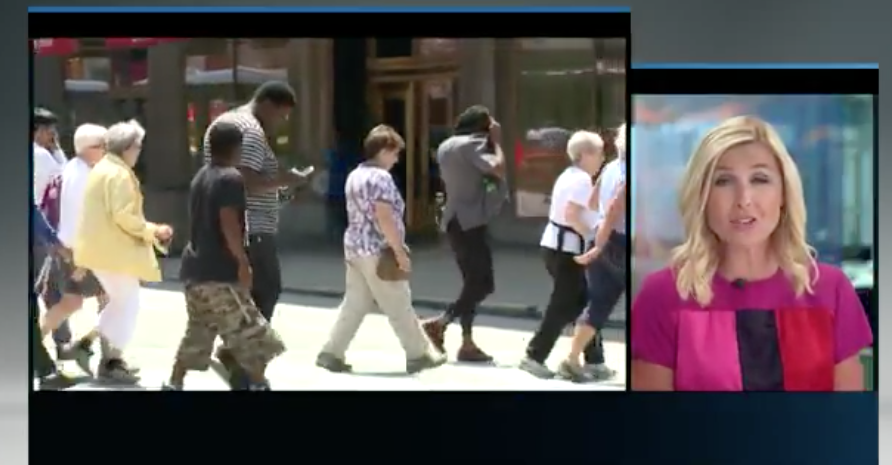There's a huge but under-appreciated public health crisis unfolding on America's streets: It's becoming more dangerous to walk. Last year, nearly 6,000 people were struck and killed while walking, a 25 percent increase since 2010.
Walking is so deadly in America because that's how we've arranged our cities and towns. Streets are designed to move motor vehicles at lethal speeds without consideration for pedestrian safety, and our scattered development patterns increase driving and car traffic, exposing people on foot to greater risk.
Instead of reforming our transportation and land use policies to make walking safer, however, American cities are doubling down on a dysfunctional system by blaming pedestrians for their own deaths.
Honolulu set the precedent earlier this summer by passing a law that forbids looking at an electronic device while walking across an intersection, even though motorists are still permitted to look at dash-mounted devices while driving through intersections. The law won't make people safer (data doesn't support the idea that "distracted walking" is a significant factor in rising pedestrian fatalities), but will lend itself to selective enforcement and racial profiling.
Nevertheless, other cities seem intent on following Honolulu's example.
In Stamford, Connecticut, City Representative John Zelinsky proposed an ordinance modeled after Honolulu's. Cleveland City Council Member Zach Reed proposed a similar law as well.
Those two bills have set off a deluge of victim-blaming in the local press. One Cleveland television station, for example, took the opportunity to point a camera at pedestrians using phones, as if that alone justified such a law.
In fact the Honolulu law has set off a round of pedestrian-hating takes across the land. Chicago-area columnist Paul Sassone, for example, told his readers, "There is too much suffering of innocent people in the world for me to feel for the terminally stupid."
If you want to know why walking is so dangerous in the U.S., this attitude explains a lot. The developing conventional wisdom pins responsibility on behavior that doesn't actually explain the public safety risk. Dangerous driving and poor street design get a pass while the victims of vehicular violence are mocked as "terminally stupid."
Look at the cities that are making progress on pedestrian safety, and you'll see policies very different than the one Honolulu has adopted. The DC region is bucking the national trend and reducing pedestrian deaths, thanks to interventions like corner sidewalk extensions and road diets that calm traffic and narrow crossing distances.
You can't solve a problem if you don't acknowledge what's causing it. That's the danger for residents of Honolulu and these copycat cities. Walking won't be any safer because of these laws, but policy makers will feel like they've addressed the issue.





